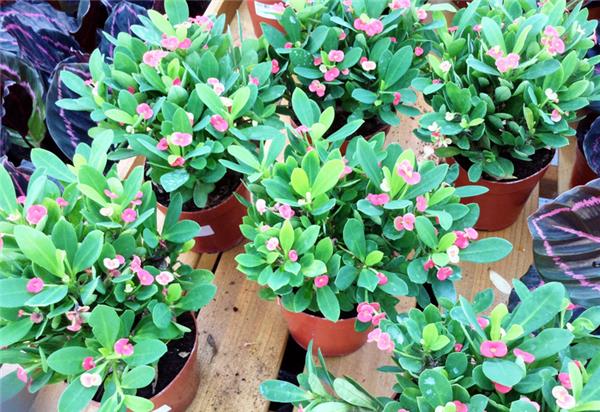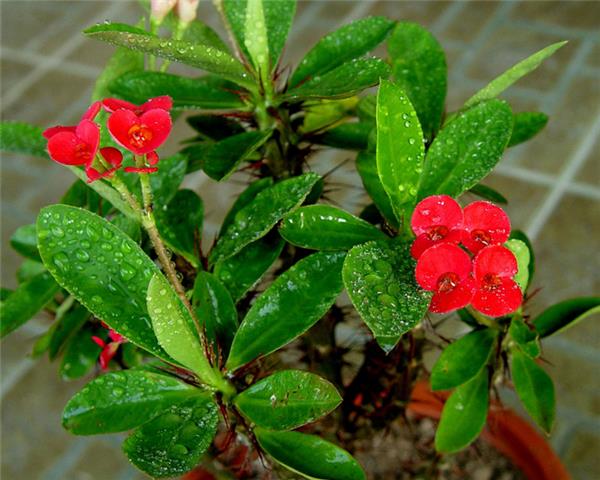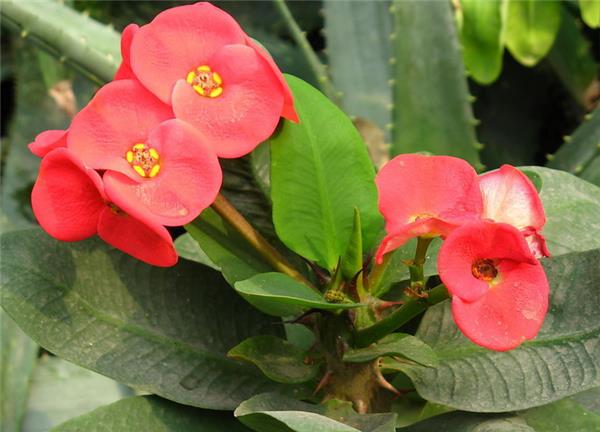The cause of yellowing of leaves of Prunus mume and its solution
The tiger thorn plum is a strong flower, which is smart, introverted, simple and lovely, and it can blossom all the year round, but what about the yellow leaves of the tiger thorn plum? Let's first take a look at the reason why the leaves of Prunus mume turn yellow.

The reason for the yellowing of the leaves of Prunus mume
1. Too much watering: Prunus sibirica belongs to fleshy stems and leaves, not afraid of drought, but afraid of waterlogging. Too much watering will hurt the root system and cause the leaves to yellowing and falling off.
2. Excessive fertilization: Chimonanthus przewalskii does not like fertilizer. If too much fertilizer or unfermented raw fertilizer is applied in the breeding process, the roots will be burned and the leaves will turn yellow.
3, bad air: the tiger thorn plum has certain requirements for the surrounding growth environment, which is most suitable for the place of ventilation and ventilation, so it is generally planted in the courtyard and balcony. If the indoor ventilation is not good and it is muggy, it will cause the leaves of tiger thorn plum to turn yellow.

4. Drug damage: when watering, the tap water should be hung for a few days, otherwise the chlorides in the water are toxic to the plants, causing the leaves to turn yellow and fall.
5. Winter dormancy: at the end of autumn, when the plum is in full bloom, it is also about to enter the winter dormancy period, so it is normal for leaves to turn yellow. Even if the leaves fall out, new leaves will sprout again in spring.
6. The temperature is too low: in the areas where the winter temperature is below 10 degrees, the old leaves will fall off, leaving only the top young leaves; when the temperature is lower, the leaves will all dry up and fall off.

What if the leaves of Prunus mume turn yellow?
If you water too much, water less and move to a sunny place. If it is caused by excessive fertilization, fertilize properly and check whether the fertilizer is suitable for the growth of Chimonanthus przewalskii. As far as possible, do not put the tiger thorn plum in a stuffy, airtight place, it is best to plant it in the courtyard, after all, tiger thorn plum has a certain degree of toxicity, out of safety is not suitable for indoor.
In addition, the tiger plum is easy to cultivate, generally rarely the occurrence of insect diseases, and elegant flowers, long florescence, is one of people's favorite decoration plants, but the tiger plum with thorns, be careful not to be stabbed. If the temperature is too low, the amount of direct sunlight of tiger thorn plum should be increased.

Finally, let's take a look at the role of tiger thorn plum in home life.
The gray-green dry branch of tiger prickly plum is prickly, with bright red and rose flowers at the end of the branch. With long flowering period, bright colors, elegant appearance and easy cultivation, it is a good flower that people like. In full bloom, the plum blossom looks like a ruby and a small star from a distance, but it looks like a smiling face of a little doll up close. When the flowers on all the branches bloom, a few red spots in the green leaves are even more beautiful and lovely.
Chimonanthus przewalskii is a vine-like prickly plant of Euphorbiaceae. The common feature of Euphorbiaceae is that white milk is secreted from the wound after the tree is injured, which is toxic. The white milk secreted by the wounds of tiger thorn plum plants has a stimulating effect on human skin and mucous membrane, and accidental eating will cause nausea, dizziness and so on. It is a favorable weapon to protect themselves and prevent diseases and insect pests in the process of plant evolution. Family cultivation will not cause harm as long as it does not fold flowers for children to play at will. People can use the impregnated filtrate of the stems and leaves of Euphorbia plants to control aphids, red spiders and other flower pests because their juices are toxic, it is best not to pot indoors, as outdoor flower ornamental is also a good choice.
Related
- Wuhan Hospital Iron Tree Blooming Result Was Instantly Frightened by the Gardener Master
- Which variety of camellia is the most fragrant and best? Which one do you like best?
- What is the small blue coat, the breeding methods and matters needing attention of the succulent plant
- Dormancy time and maintenance management of succulent plants during dormancy
- Minas succulent how to raise, Minas succulent plant pictures
- What are the varieties of winter succulent plants
- How to raise succulent plants in twelve rolls? let's take a look at some experience of breeding twelve rolls.
- Attention should be paid to water control for succulent plants during dormant period (winter and summer)
- Watering experience of twelve rolls of succulent plants
- Techniques for fertilizing succulent plants. An article will let you know how to fertilize succulent plants.



